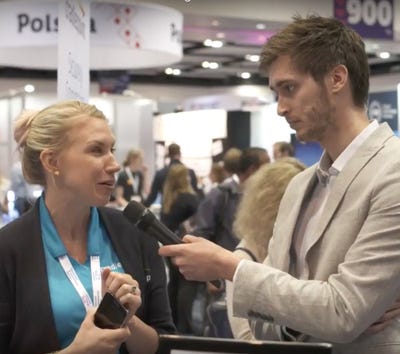What ‘Pilot Purgatory’ Is and How the Best Have Beaten ItWhat ‘Pilot Purgatory’ Is and How the Best Have Beaten It
Pilot purgatory is one of industrial IoT’s biggest concerns. Now some of the world’s most prominent industrial companies have devised ways to overcome this stagnation.
October 23, 2018

Purgatory is a suspended place where a person or object hangs, balanced between two definite states of being. And last year, Cisco revealed that’s where the majority of IoT pilots end up – not necessarily unsuccessful, but with no clear hope of seeing a proper rollout that will justify all the upfront efforts and expense.
Many IoT projects underway right now are in industrial sectors, one of the main areas where IoT has started to become profitable. This makes “pilot purgatory” one of the biggest problems faced by manufacturing, supply chains and other industrial areas in the midst of digital transformation.
Ahead of Industrial IoT World in Atlanta this month, we gathered the thoughts of some industrial heavy-hitters – GE Digital, Lockheed Martin, Panasonic, Chamberlain Group and Bloomberg New Energy Finance – on what causes pilot purgatory and the approaches they’ve taken to overcome it or avoid it altogether.
[Industrial IoT World is the event that takes IIoT from inspiration to implementation, supercharging business and operations. Get your ticket now.]
What Causes Pilot Purgatory?
The consensus among our five spokespersons is that industrial companies guilty of pilot purgatory often don’t plan pilots with a full rollout in mind. They have good intentions, but fall short of treating every step of the pilot as a step toward a company-wide initiative. Panasonic Director of Mobility and Technology Tavis Szeto succinctly explains that if the pilot wasn’t part of the original business plan, there should be no surprise when it doesn’t reach full fruition.
Bloomberg NEF Head of Emerging Technology Analysis Claire Curry explains other ways in which companies undertake pilots without properly considering the bigger picture. They’ll enter contracts with startups that specialize in small projects but aren’t capable of large scale initiatives, or they lack trust and won’t risk letting startup partners tackle the full project. In energy and utilities, industry regulation can keep initiatives limited to small application areas regardless of what they’re capable of.
The absence of a realistic end-to-end plan also results in bad prioritization and misplaced goals. Szeto and Lockheed Martin Aeronautics Senior Fellow Don Kinard have both seen companies chasing technology for technology’s sake, instead of solving existing problems for themselves and their customers.
According to GE Digital Chief Human Resources officer Jennifer Waldo, pursuing technology implementation with blinders on can mean softer business-wide factors like company culture and employee mind-sets are overlooked. And it happens all too often, particularly when IT leads the implementation without consulting other areas of the business, or the rest of when the rest of the business is reluctant to play the role of consultant. Chamberlain Group CEO JoAnna Sohovich says plenty of companies are so concentrated on immediate concerns, they see more futuristic business ideas as “a distraction at best… a threat to [their] legacy business at worst.”
How Pilot Purgatory Can Be Beaten
Some of the interviewees have advice for how pilot purgatory can be beaten, taken from firsthand experience. Curry says the pilot should be recognized as a major project from start to finish, paying special attention to why such a big project makes sense for the business in the first place. It’s better to understand that the initial expense won’t justify such a long-term payback on day one of the pilot, rather than day one of the full rollout. Waldo’s guidance is “think holistically what you’re solving for and don’t forget to think about your organization, your culture and your talent.”
The Chamberlain Group has gone a step further and created an “emerging business” line of business, outside of the main company. It looks to the future, incubation ideas, and decides if they’re viable and how they can be applied to the legacy business. And they have license to disrupt their colleagues’ projects in the central organization, if it makes sense in the long run for the business as a whole.
Employing similar tactics, some companies have seen outstanding industrial IoT success without the slightest whiff of purgatory – six are summarized in this free-to-download interactive report from Industrial IoT World. Shell made $1 million (and counting) from an $87,000 upfront IoT investment on their oil fields in Nigeria, IoT is becoming integral to Coca-Cola’s manufacturing and bottling facilities in Indonesia, and Carlson products saw ROI in under 30 days after applying IoT to measure manufacturing capacity and equipment performance.
The overarching message from those who’ve beaten pilot purgatory is that if it’s going to happen, the symptoms will usually be there from the very beginning and you probably should’ve seen it coming from a mile away.
The remedy is continuous, business wide consultation and consideration from start to finish. Which sounds obvious; identical advice has been echoed here and elsewhere plenty of times before. But apparently, the advice still bears reminding considering how many companies fail to follow it consistently.
About the Author
You May Also Like







